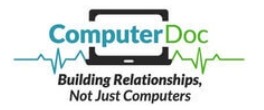If a disaster were to occur tomorrow, would your business be able to recover? If you don’t have a disaster recovery plan, you may not have an option. According to the latest MSP threat guide by ConnectWise, two out of three SMBs have suffered a ransomware attack in the last 18 months. With a reliable disaster recovery plan, your business is prepared for anything, including cyberattacks.
We all know how important data is to modern businesses. It’s the lifeblood of every organization. That’s why you should know about the potential scenarios that could seriously impact your data – and your business. Here are three of the most common disasters that impact organizations.
Potential Disasters That Can Impact Your Business
1. Natural Disasters
According to the National Oceanic and Atmospheric Administration, the U.S. experienced 20 natural disasters, such as floods, hurricanes, and tornadoes in 2021 costing over $145 billion. These storms can ruin your office in seconds, taking away all your vital equipment, including hard drives and onsite servers.
There’s only so much you can do to prep for a natural disaster. If a hurricane or tornado comes through your area, your options are limited. With that said, a data backup and recovery plan can at least ensure that your data is secure and accessible in the event of a natural disaster. An IT expert can migrate, replicate and store your data at an offsite location – ensuring you always have a backup plan.
2. Cyberattacks
Second on this list is the cyberattack. We mentioned in our introduction the threat that ransomware can have on your business. Unfortunately, that is just one example of a cyberthreat. Every 39 seconds, someone is being impacted by a cyberattack and only 40% of businesses can get back running after one. These attacks are occurring at an alarming rate and can get costly extremely fast. IBM found that the average cost of a data breach in 2021 was over $4.2 million.
There are many things you can do to keep your business safe from cyberattacks. For starters, make sure your business is equipped with the best cybersecurity in order to keep your network safe. It’s also important that you and your team are aware of the signs of a cyberattack and what to watch out for when it comes to emails or unknown attachments. An IT partner can evaluate your entire infrastructure, identify vulnerabilities and address them for you. Whether it’s firewalls, 24/7 monitoring, threat detection or SOC as a service, there’s many cybersecurity services and best practices to implement to keep your business safe from cyberattacks.
3. Power Outages
The third disaster that can impact your business is a power outage. It’s a no-brainer that we need electricity for our businesses to run. So, if your business experiences a power outage, what happens? The answer is downtime – something we all want to avoid. According to Gartner, the average cost of IT downtime is $5,600 a minute. So, imagine having a power outage for a few hours or days – the cost can easily climb into the six-figure range quickly.
Power outages are more costly than just the time offline. Without the proper steps in place, a power outage can lead to lost data. One of the main benefits of a cloud backup and recovery plan is that it keeps your data in a centralized location that can be accessed from anywhere. Whether it’s power outages, hybrid work or any other scenario, your data is always within reach when it’s secure in a cloud environment.
Conclusion
Do you know what these three disasters have in common? They’re unpredictable and costly. And while we can’t always predict when the next disaster may occur, what everyone can do is create a disaster recovery plan to stay prepared.
A disaster recovery plan can help your business stay running and keep your data safe and secure. Whether it’s a storm or a cyberattack, a good plan can make sure your business doesn’t fall to a disaster. At Computer Doc, we’re here to help you create a backup plan to ensure your success.
If you’re looking for more cyber tips, please feel free to check out more of our blogs.




